Early in the morning it became restless in the hostel. At some point, the first person in the packed dormitory with at least 40 bunk beds began to rustle in his inevitable plastic bag, then the next. By six o'clock at the latest, everyone was awake. That's pilgrim life: get up early, go to bed early. Since there was nothing to eat at the hostel in Burgos, I left without breakfast. It was still very cold and a long tedious stretch on the fortunately still relatively lonely national road was ahead. Somewhere there was then a café con leche and after more tedious kilometers I could finally turn onto side roads. What a sudden change of mood.
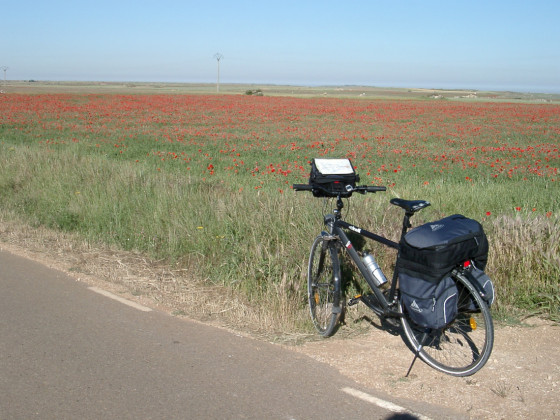
Suddenly it was warm, the sun was shining. To the left and right were fields of poppies. The soul began to dangle and the ride became a pleasure.
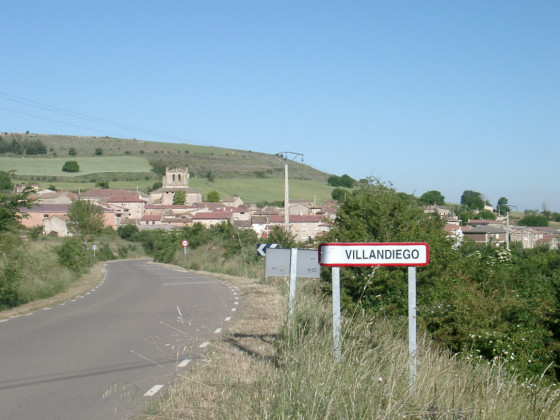
Villandiego
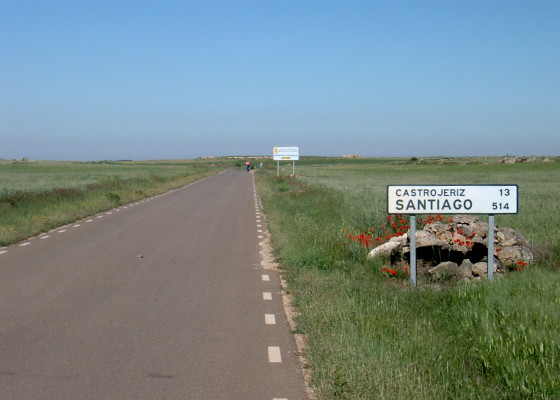
There appeared this big signboard with the indication 514 km (319 miles) to Santiago.

Years later, I walked this route. Thereby completely different impressions arose!
To the descriptions and photos of the sections Rabé de las Calzadas - Castrojeriz - Fromista

On the way by bike, after many small climbs in the morning heat, I reach Hontanas, a dreamy village and a popular pilgrim meeting place.
The Dutch woman who started with her bike after me is already sitting comfortably in front of one of the pilgrims' meeting places. How did she do that? She has not overtaken me.
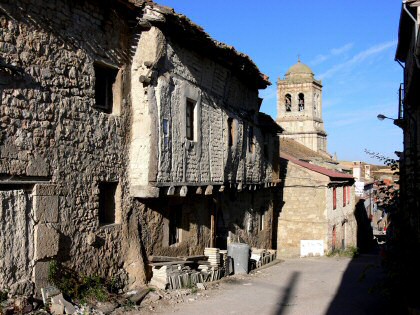
A romantic alley in Hontanas. The village seemed extinct - except for the pilgrims walking around.
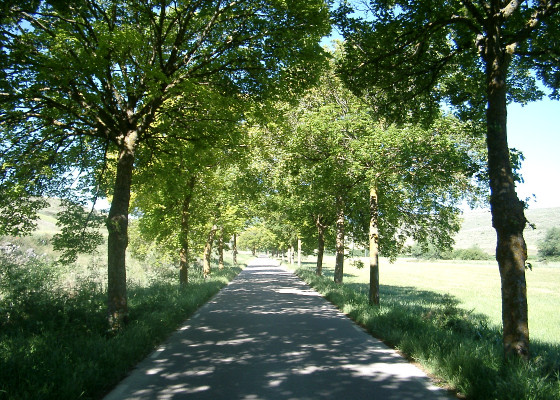
After Hontanas came the enjoyable highlight of the day. In a long, long shady (= cool) avenue it went slightly downhill to San Anton. I had to sit only on the saddle and leisurely roll downhill to the monastery ruins. I was almost embarrassed because of the many foot pilgrims that I passed so effortlessly.
Bon camino, bon camino...
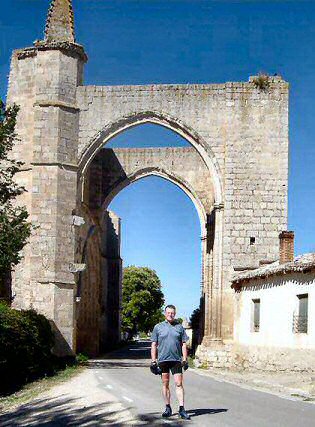
There I stand in front of the ruined monastery of San Anton. The Dutch woman, who prefers to drive comfortably and much slower than I ...... has caught up with me once again - only James knows how this is possible - and presses the shutter release of my camera.Hidden in the Gothic ruins of the monastery is a small pilgrim hostel.
There she goes, the Dutchwoman. She has been on the road for a long time - from Holland - and always drives comfortably.

Just before Castrojeriz is this church of the former monastery Santa Maria del Manzano from the 11th-13th century. It houses a museum and I just did not feel like museums.
After Castrojeriz, pilgrims climb a mesa on a treeless path in the blazing sun to walk down the other side. As a cyclist, I went around the mountain, which is much further but much less strenuous.
In 2004 I had no idea that in 2013 I would also climb this mountain (Alto de Mostelares, 911m) as a foot pilgrim. It was cool and it was not so bad.
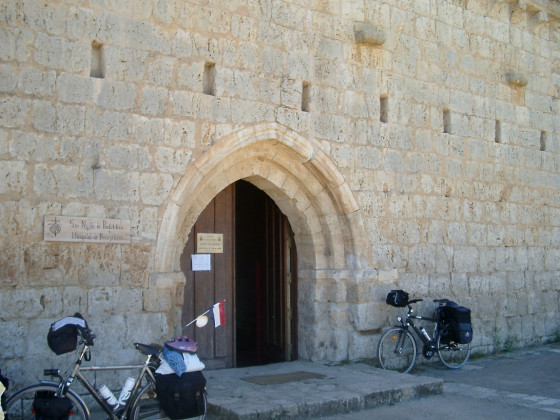
Subsequently, a small mountain had to be conquered after all. After descending to the valley of the Rio Pisuerga, I found the Hermitage of San Nicolas. It was renovated in recent years and converted into a pilgrim hostel.
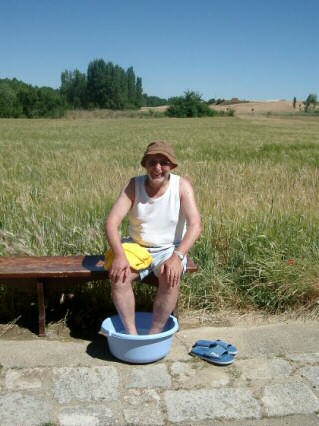
This pilgrim is sitting in front of the Hermitage of San Nicolas. He willingly lets himself be photographed and enjoys the cooling of his hotly walked feet.
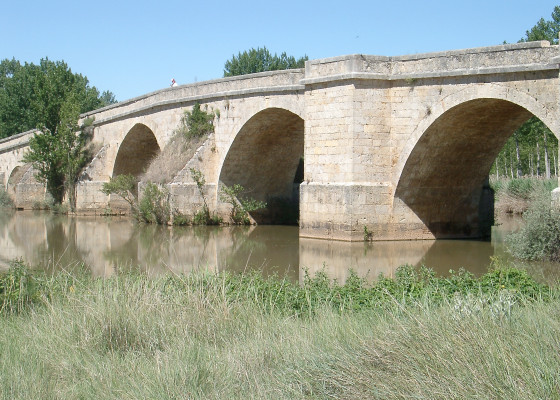

Just after the Hermitage follows an impressive encounter with the Romanesque history of the Way of Saint James. Here the famous Romanesque Fitero Bridge spans the Rio Pisuerga.
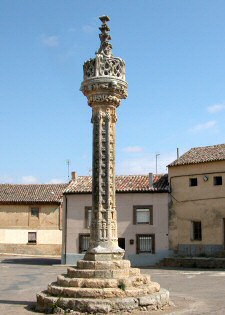
Since rivers are known to flow in valleys, crossing them is followed by a climb up the next mountain (hill). It was already approaching noon and the sun was burning, so the uphill was a bit exhausting. At a shady tree I made a stop.
There two cyclists came towards me. They were on the way back from Santiago to Germany. Respect!
At the top of the hill in Boadilla del Camino I visited the pilgrim hostel with swimming pool and drove around the church of St. Mary from the 16th century. Unfortunately it was closed. At least I could admire the Gothic column of judgment next to the church.
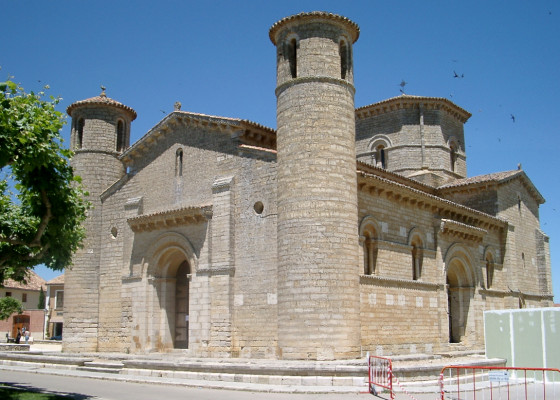
In Fromista I met my fellow pilgrim Hans for lunch. Afterwards I visited the beautiful Romanesque church of San Martín. It was restored to its original Romanesque state at the beginning of the 20th century. Because of the impossible Spanish siesta times, I could only visit this church from the outside.
In 2013, when I arrived here on foot, it was 16:30 and the church was just opening.
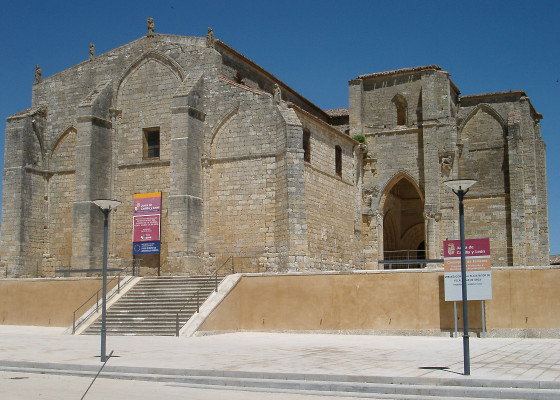
A few kilometers further I came to the church of Santa Maria la Blanca in Villalcázar de Sirga.
Only this church remains of the largest monastic complex in Castile, built in 1157 by Sancho III.
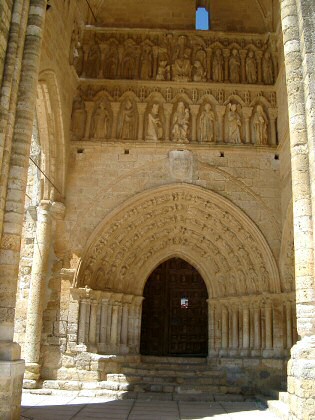
The huge late Romanesque main portal of the church
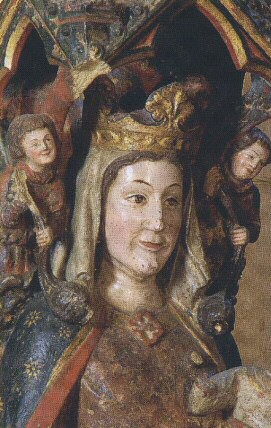
Maria la blanca, the white Mother of God, patron saint of the church. Many miracles are attributed to her.
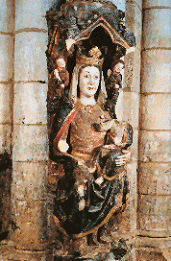
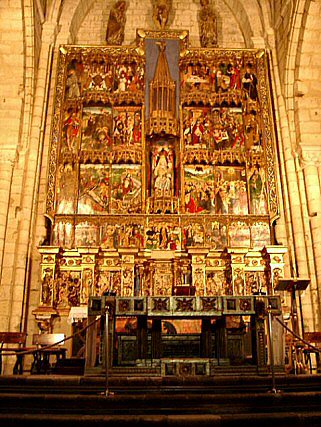
The high altar inside the church
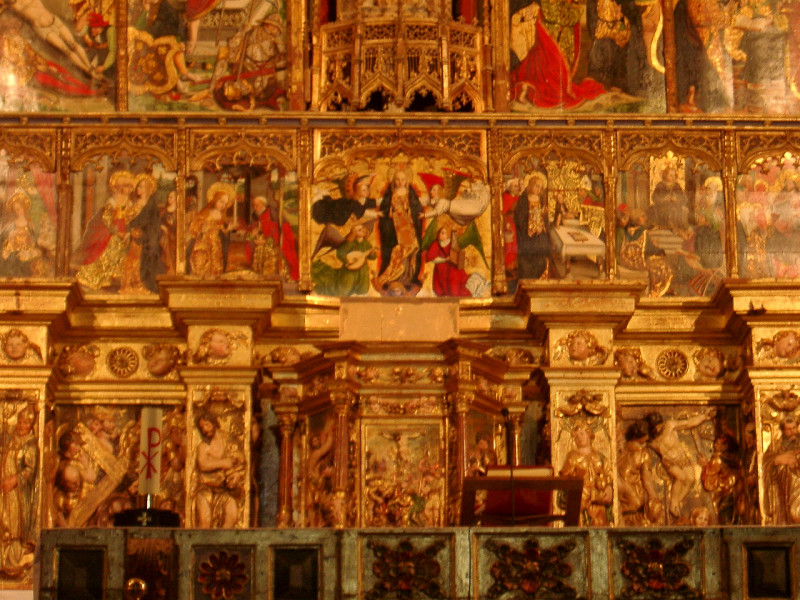
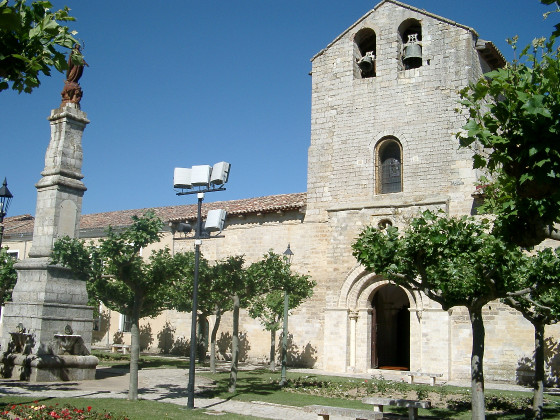
Late in the afternoon I arrived in Carrión de los Condes, the stage destination. The hostel just to the left of the Santa Maria Church was clean and good beds promised a deep, restful sleep.
In 2013, traveling on foot, we slept just outside Carrión in the converted into a hotel San Zoilo Monastery
Photos: Gerhard Eichinger
Photo Villalcázar - Marienstatue 'Santa Maria la Blanca' from the homepage of Villalcázar de Sirga


